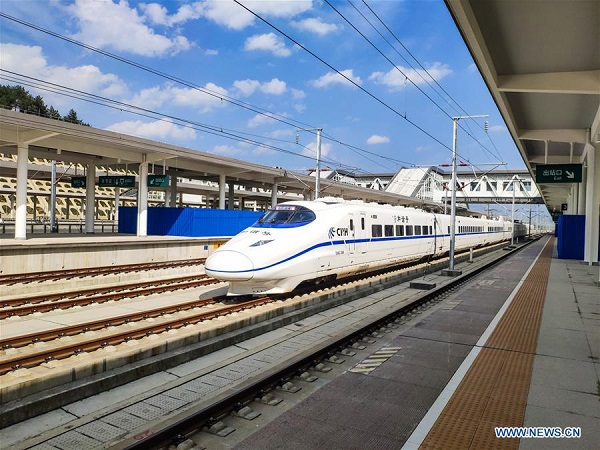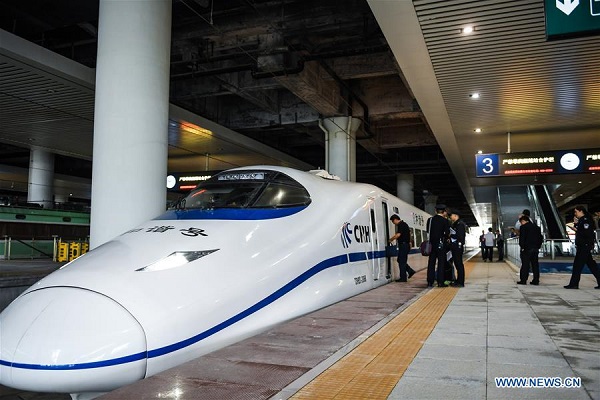Bullet train conducts test run on Xingwen-Guiyang section of Chengdu-Guiyang railway


A bullet train passes Bijie Railway Station during a test run on the Xingwen-Guiyang section of the Chengdu-Guiyang railway in Southwest China's Guizhou province, Oct 9, 2019. The 632-kilometer Chengdu-Guiyang railway is a key constituent of China's high-speed railway network, linking the capital of Sichuan province and the capital of Guizhou province with a design speed of 250 kilometers per hour. Sections of the railway in Sichuan are already in use, while the whole line will be in operation by the end of this year. [Photo by Tao Liang/Xinhua]

Staff members work aboard a bullet train during a test run on the Xingwen-Guiyang section of the Chengdu-Guiyang railway in Southwest China, Oct 9, 2019. The 632-kilometer Chengdu-Guiyang railway is a key constituent of China's high-speed railway network, linking the capital of Sichuan province and the capital of Guizhou province with a design speed of 250 kilometers per hour. Sections of the railway in Sichuan are already in use, while the whole line will be in operation by the end of this year. [Photo by Tao Liang/Xinhua]

Staff members board a bullet train for a test run on the Xingwen-Guiyang section of the Chengdu-Guiyang railway from Guiyang North Railway Station in Guiyang, Southwest China's Guizhou province, Oct 9, 2019. The 632-kilometer Chengdu-Guiyang railway is a key constituent of China's high-speed railway network, linking the capital of Sichuan province and the capital of Guizhou province with a design speed of 250 kilometers per hour. Sections of the railway in Sichuan are already in use, while the whole line will be in operation by the end of this year. [Photo by Tao Liang/Xinhua]







